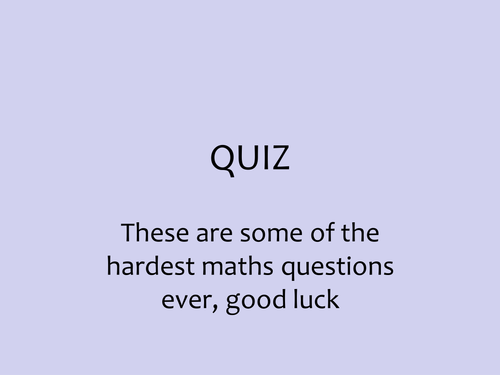
623Uploads
5494k+Views
2904k+Downloads
Math

Area of triangles
An area of triangles worksheet, starter is naming and describing triangles and converting metric units, extention asks students to write differentiated questions for a friend.

Pythagoras handout
Some pythagoras questions, starter main and extension looking for pythagorean triples

Percentages worksheet (without calculator)
Simple 3 part worksheet for finding percentages. Starter has 10, 50 and 1%, main has questions finding percentages of amounts, extention is increasing amounts by given percentage.

Rounding to decimal places handout
handout for rounding to decimal places, starter is rounding to tens, hundreds and thousands.

Circumference of a circle
Circumference handout, starting activity is basic substitution, main has some converting of mm and cm to metres. Extension has first 100 digits of pi to see how many students can memorise.

Area of circle Handout
Nothing fancy, just some starter questions squaring numbers, q's finding area from radius and diameter and extention q's finding radius from area

Drawing straight lines fast
A new and improved powerpoint with animations showing how to plot lines whose equations are in the form y=mx + c. There are some questions asking students to find the slope and intercept and a load of examples of how to draw the lines, then some lines for them to draw at the end.
Extention asks students to draw lines wih same slope to see if they can spot that they are parallel

Substitution game
Students take it in turn to pick a square on the grid, then they each roll 2 dice, one to give a value of a and the other the value of b, they then work out the value of the expression for thier values, whoever has the highest puts his/her color counter on he square. However has the most counters on the board at the end wins.

equation of a straight line: y= mx + c ppt
Powerpoint and worksheets with quick questions. Great plenary/starter. A table to complete where students have the equations of a line and have to say gradient and intersection. Maybe a good starter, nothing fancy, just needed something to drum this home. Powerpoint slide and worksheet for students to fill in.

Box Plot animation --- Maziarz Mapped
A little starter finding UQ, LQ and median and an animation showing this creating a box and whisker plot, might be a nice base to build something more substaintial on.

Quadratic simultaneous equations
A walkthrough of how to solve simultaneous equations where one is linear and the other is quadratic. There is also a starter getting students to practise thier factorising.

Maths KS2, KS3: Adding fractions starter quiz
A quiz i use when i start teaching adding fractions. There are groups of objects to be added together, e'g 2 fish and 3 fish is 5 fish. Then pictures such as 2 fish and 3 pigs, to add these another name is needed we, this links with the idea to add things the name needs to be the same, so with fractions the denominators need to be the same.

Algebraic multipliction
A powerpoint showing expressions being multiplied and divided, students have to work out whats going on.

Order of Operations Clues
Some Order of Operations questions, each answer gives a letter and the letters spell out clues to a celebrity.found an error on this sheet, but sorted it, hope you find it useful

Standard form starter quiz
A quiz where students have to say which is bigger a or b, first with pictures then numbers, finally with numbers in standard form, hopefully highlighting the idea tha tstandard form helps compare and work with very big or very small numbers

Maths KS4 Indices laws -lesson plan, worksheets
These are for an introductory lesson i did with a very low ability GCSE group.
Each child was secretly given a super power, telling them about one of the laws of indices, this was built up by telling them that only they would be able to solve these questions. they then practised before answering q's as a group, other members had to work out how they were answering questions.

Maths KS3: Direct and Indirect Proportion starter
A grid showing variables, the students have to work out which are related, e.g. time spent revising and mark on test are related. Going through students answers i tend to use one colour to match up direct relationships and another to match up indirect and ask them to think about what the red relationships have in common and what the blue relationships have in common. Will this relationship be blue or red?




















